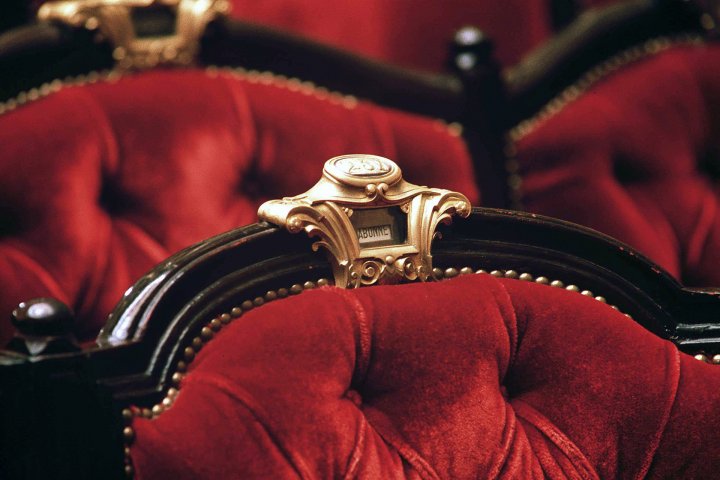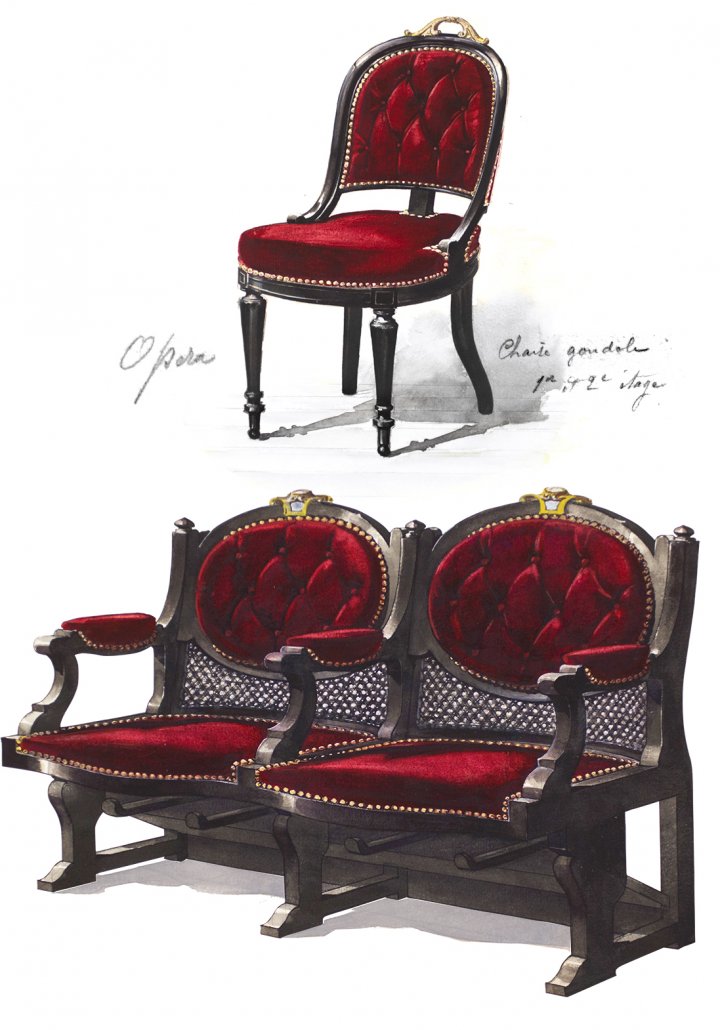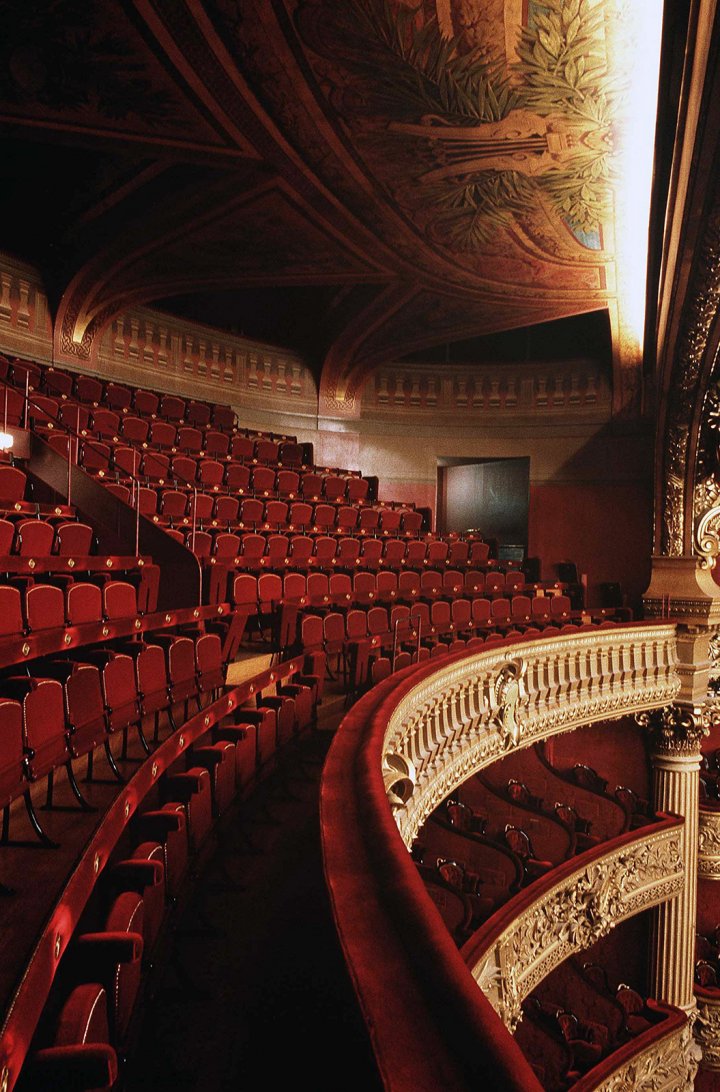

History
The seats of the Palais Garnier, striking features of the monument, contribute to the general aesthetics of the theatre. Made of black tinted wood and red velvet, these seats are emblematic of the Napoleon III style and of the wealth of the architecture and of the design of the Palais Garnier. To design these seats, the architect collaborated with the artisans Belloir & Vazelle, tapestry-makers and decorators of the greatest French theatres of the century.
Made of black tinted wood and red velvet, these seats are emblematic of the Napoleon III style

Charles Garnier chose the red colour for the seats, which was a complete novelty then. At the time, opera houses displayed other colour: the old Opera of the street Le Peletier was white and gold, while the Queen’s Theatre in Versailles was completely blue. While discussing this matter with Eugène Delacroix, he answered: “we need to surround the spectators by a shade which produces, by its lights, an effect of coolness and health. Hence, the solution appears immediately: solely red can give this result; the pink reflection, spread on the faces and shoulders of women, contributes to their freshness and sheen.”*
* Garnier Charles, Le théâtre, Acte Sud, 1992.

Your seat in paradise!
Discover the amphitheatre of the Palais Garnier, the closest part of the Opera to the famous ceiling painted by Marc Chagall. It used to be called the paradise, because it is the highest part of the auditorium. Consequently, the students of the Paris Opera Ballet school were nicknamed « the children of paradise », for they used to sneak into the amphitheatre to catch a glimpse of the performances by the professional dancers. Discret and intimist, the amphitheatre offers a view on the all auditorium, and let us appreciate its wonderful architecture.